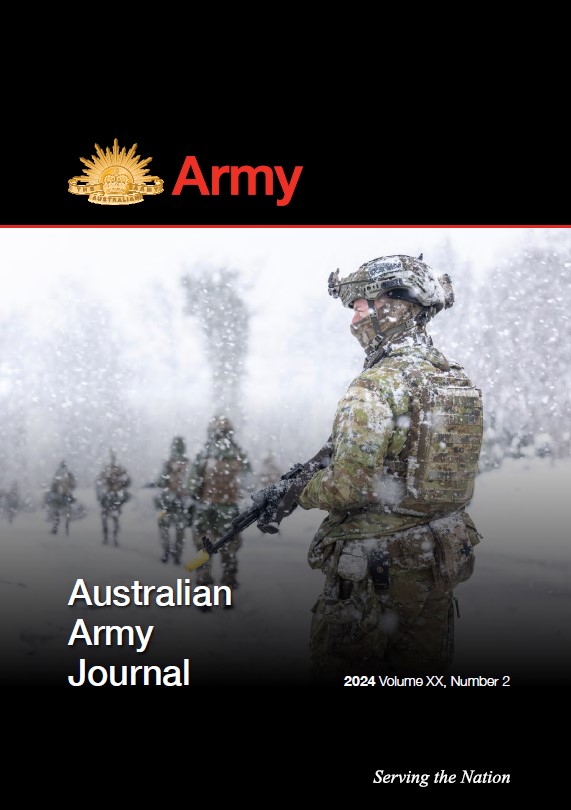Brigadier James A Davis
Director-General Future Land Warfare
The purpose of the military profession is to apply force for the ends of policy. Members of this profession possess specific knowledge to deliver on this purpose. This specific knowledge is not fixed. It changes with the character of war. The sources of the character of war are many, influenced by things like technology, law, politics and ethics. In one sense, the most recent changes in the character of war are already ‘out there’ in current conflicts in Ukraine or the Middle East, and are reflected in doctrine and in the minds of defence planners. While the particulars of the application of force in one conflict can inform, they do not prescribe the character of conflicts that follow. Nuclear conflict is a simple example to confirm this idea. As yet there is no prequel for a nuclear conflict. Any nuclear conflict will be true to the nature of war but will reflect a marked departure from the preceding character.
Nations that go to war or use the threat of force have some agency in its character. The accepted theory of war reminds us that the choice about how to apply force is “the first, the supreme, the most far reaching act of judgement” (Clausewitz, On War) that a statesman could make. But, like all choices in war, this application is subject to the enemy’s will, friction, chance, and the trajectory of conflict to ‘absolute war.’ The National Defence Strategy, released in April this year, describes Australia’s preferences for the application or threat of force for policy ends. It follows that our body of professional knowledge will conform to these choices and remain attuned to the fixed nature of war. The Army both develops and preserves its body of knowledge in publications such as the Australian Army Journal. This issue of the Australian Army Journal signposts the new knowledge we might need in respect to technology, ways of fighting and geography.
Jason Kirkham’s article Upgrading the Army’s Fires Lethality: How the Australian Army Can Harness the Firepower Advantages of the Fourth Industrial Revolution describes the impact of the fourth industrial revolution on Army’s indirect firepower and targeting capabilities. The article points to new areas of professional knowledge that Army will need related to how artificial intelligence applications learn, their limitations and strengths. In No Other System Could Have Achieved the Result’: The Australian Beach Groups, 1943–1945, Dayton McCarthy highlights the swift transformation Army undertook, following the after-action report on Operation Postern, to establish Australian Beach Groups in late 1943 and early 1944. Littoral operations is another a body of knowledge that Army officers will need to hold.
In Structuring for Train, Advise, and Assist Missions? The Australian Army’s Past, Present, and Future Andrew Richardson highlights the strategic value of trusted partnerships through train, advise and assist (TAA) activities. He explains Army’s history of delivering TAA missions from the Vietnam era through to Operation Kudu. Richardson also draws on experiences of our allies and partners, such as the US and UK Security Force Assistance Brigades model, concluding with his own assessment that Australia’s small professional force would not likely be able to follow suit. He does, however, suggest that Australia would benefit strategically from greater persistence in the region – relying on more regular regional TAA visits. There is an obvious interplay between these ideas and Andrew Mahr’s paper, A Plan B: An Australian Support to Resistance Operating Concept. Mahr argues for the ADF to develop the capability and capacity to support regional neighbours in developing resistance capabilities to clearly demonstrate our country’s ability to disrupt, impost cost on, or possibly deny an aggressor’s ability to achieve their strategic aims.
Gregory MacCallion and Courtney Stewart discuss deterrence and its application in the context of the Army. These authors highlight limitations in the public discussion regarding the application of Australia’s strategy of deterrence through denial. MacCallion and Stewart examine the contribution of land power, through the integrated force, to deliver deterrence objectives. Most Army officers and soldiers will support deterrence through the planning and execution of operations, exercises and activities. They should do so with an understanding of how deterrence might or might not function in theory and practice.
The specific knowledge of autonomous systems, littoral operations, the region and deterrence relate to the application of force. Army professionals will also require a working knowledge of the Army as an institution. This knowledge relates to how Army functions as a social system. Such knowledge will be needed to reduce Defence and veteran suicide and to respond to new training models or types of recruits as Australia’s demographics and strategic circumstances change. Frain and Jans in The Social Identity Foundations of Military Leadership address how military leadership functions in this context and will be invaluable as Army strengthens the foundations of its social identity.
The Australian Army Journal is rightly a vanguard for new areas of professional knowledge before they are sanctioned in doctrine or concepts. Its strength is the breadth of contributors – in this edition academics, serving officers and hybrids. We are grateful for their insights and welcome yours as well.








